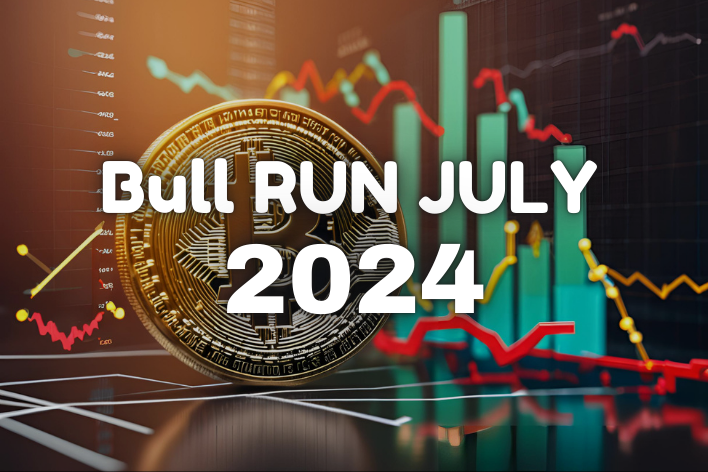Global Consensus on Crypto Regulations: How July 2024 Marks a Turning Point
Introduction:
Overview
In July 2024, the global conversation on cryptocurrency regulation reached a new milestone as international leaders, regulatory bodies, and financial organizations intensified their efforts to establish a unified framework for digital assets. This period marked significant developments in how countries and global institutions approach the challenges and opportunities presented by the rapidly evolving crypto market.
Why This Matters
The push for a global consensus on crypto regulations reflects the need for cohesive standards that address issues of financial stability, consumer protection, and anti-crime measures in the cryptocurrency sector. As digital assets continue to grow in popularity and complexity, a coordinated international regulatory approach becomes increasingly essential for managing risks and fostering innovation.
Major Developments in July 2024:
1. G20 Summit Discussions on Crypto Regulations
Summary of Discussions:
At the G20 summit held in July 2024, finance ministers and central bank governors from around the world convened to discuss the future of cryptocurrency regulation. Key topics included:
Global Standards: The G20 proposed a set of global principles for regulating digital assets. These principles aim to provide a framework for national regulations and promote international cooperation.
Regulatory Coordination: The need for synchronized regulatory efforts across different countries to prevent regulatory arbitrage and ensure market integrity.
Consumer Protection: Emphasis on creating regulations that safeguard investors from fraud and ensure transparency in crypto transactions.
Key Outcomes:
Global Principles: A draft set of global regulatory principles was presented, focusing on financial stability, investor protection, and market integrity.
Action Plan: An action plan was outlined for member countries to adopt these principles and work towards a unified regulatory framework.
Sources:
G20 Summit: New Crypto Regulations Proposed
G20 Crypto Regulation Principles
G20 Proposed Principles and Action Plan for Crypto Regulation (July 2024)
Principle/Action | Description |
1. Consistent Global Approach | Develop a comprehensive and consistent global regulatory framework for crypto-assets. |
2. Risk-Based Regulation | Apply regulation based on the risk profile of different crypto-assets and activities. |
3. Consumer Protection | Implement measures to protect consumers and investors from fraud and misconduct. |
4. Financial Stability | Address risks to financial stability arising from crypto-asset activities. |
5. Anti-Money Laundering (AML) | Enhance AML and counter-terrorism financing (CTF) measures for crypto-assets. |
6. Technology Neutrality | Ensure regulations are technology-neutral to foster innovation. |
7. Cross-Border Collaboration | Promote international cooperation and information sharing among regulators. |
8. Standardization of Terminologies | Standardize terminologies and definitions related to crypto-assets across jurisdictions. |
9. Monitoring and Reporting | Establish frameworks for ongoing monitoring and public reporting of crypto-asset markets. |
10. Regulatory Flexibility | Allow for regulatory adjustments as the crypto-asset market evolves and new risks emerge. |
2. FATF’s Updated Guidelines on Virtual Assets
Summary of Updates:
The Financial Action Task Force (FATF) released updated guidelines for virtual assets and Virtual Asset Service Providers (VASPs). The updates include:
Enhanced AML/CFT Measures: New requirements for VASPs to implement anti-money laundering (AML) and counter-financing of terrorism (CFT) measures.
Due Diligence Requirements: Increased obligations for VASPs to conduct customer due diligence and report suspicious activities.
Key Impact:
Stronger AML/CFT Framework: The updates aim to strengthen the global AML/CFT framework for cryptocurrencies, enhancing the ability of countries to combat financial crimes.
Comparison of Old and New FATF Guidelines
Category | Old FATF Guidelines | New FATF Guidelines |
Scope | Primarily focused on traditional financial institutions. | Expanded to include virtual assets and Virtual Asset Service Providers (VASPs). |
Risk Assessment | Basic risk assessment requirements. | Enhanced risk-based approach for virtual assets. |
Customer Due Diligence (CDD) | Standard CDD measures. | Enhanced CDD requirements, including for virtual assets. |
Suspicious Activity Reporting (SAR) | Traditional SAR processes. | Strengthened SAR requirements for virtual assets. |
Travel Rule | Limited application to virtual assets. | Comprehensive application to virtual assets, including the Travel Rule. |
Virtual Asset Service Providers (VASPs) | Minimal guidance for VASPs. | Detailed requirements and guidance for VASPs. |
Implementation | Slow and inconsistent across jurisdictions. | Stricter and more uniform implementation across jurisdictions. |
3. IOSCO’s Report on Best Practices for Crypto Markets
Summary of the Report:
The International Organization of Securities Commissions (IOSCO) released a report detailing best practices for the regulation of crypto markets. Key recommendations include:
Regulation of Crypto Exchanges: Guidelines for regulating exchanges to ensure transparency, market integrity, and investor protection.
Investor Protection Measures: Recommendations for protecting investors from fraud, manipulation, and other risks in the crypto markets.
Key Impact:
Guidance for Regulators: IOSCO’s report provides a roadmap for national regulators to develop effective and harmonized regulatory approaches for the cryptocurrency industry.
4. BIS’s Digital Currency Project Updates
Summary of Updates:
The Bank for International Settlements (BIS) made progress on its digital currency projects, focusing on:
CBDC Development: Ongoing research into the design and implementation of Central Bank Digital Currencies (CBDCs).
Cross-Border Payments: Exploration of CBDCs for cross-border transactions to improve efficiency and reduce costs.
Key Impact:
Informing CBDC Policies: The BIS’s updates help central banks develop effective CBDC frameworks and explore their role in the global financial system.
5. Global Regulators’ Collaborative Efforts
Summary of Collaborative Efforts:
Regulatory bodies from various countries have been engaging in collaborative efforts to address global crypto market challenges. Key initiatives include:
International Working Groups: Formation of working groups to share research and develop joint policies.
Shared Research: Collaborative research on crypto market risks, innovations, and regulatory solutions.
Key Impact:
Coordinated Global Efforts: These efforts aim to create a cohesive regulatory framework and address cross-border issues in the crypto industry.
Key Themes in Global Regulatory Discussions:
Balancing Innovation and Regulation
Discussion: Regulators are grappling with how to create frameworks that protect investors and ensure financial stability without stifling innovation in the crypto sector.
Focus: Creating regulations that support technological advancement while addressing potential risks.
Harmonization of Regulations
Discussion: There is a strong push for harmonizing regulations across countries to create a consistent global standard for cryptocurrencies.
Focus: Developing international standards to prevent regulatory arbitrage and ensure a level playing field for crypto businesses.
Cross-Border Cooperation
Discussion: Enhancing cooperation among countries to manage global challenges related to cryptocurrencies.
Focus: Sharing information, aligning regulatory frameworks, and coordinating efforts to address issues like financial crimes and market manipulation.
Consumer Protection
Discussion: Ensuring that regulations include strong measures for protecting consumers from fraud and other risks.
Focus: Implementing regulations that safeguard users and promote transparency in the crypto market.
Conclusion:
Summary of the Current Landscape
The global consensus on crypto regulations as of July 2024 represents a crucial step towards creating a cohesive and effective international regulatory framework for digital assets. With significant developments from the G20 summit, FATF’s updated guidelines, IOSCO’s best practices, BIS’s CBDC projects, and global collaborative efforts, the regulatory landscape is evolving to address the challenges of the crypto market.
Looking Ahead
The future of crypto regulation will depend on how well these initiatives are implemented and whether countries can align their policies to support both innovation and market integrity. The coming months will be critical for translating these global discussions into concrete regulatory actions.





